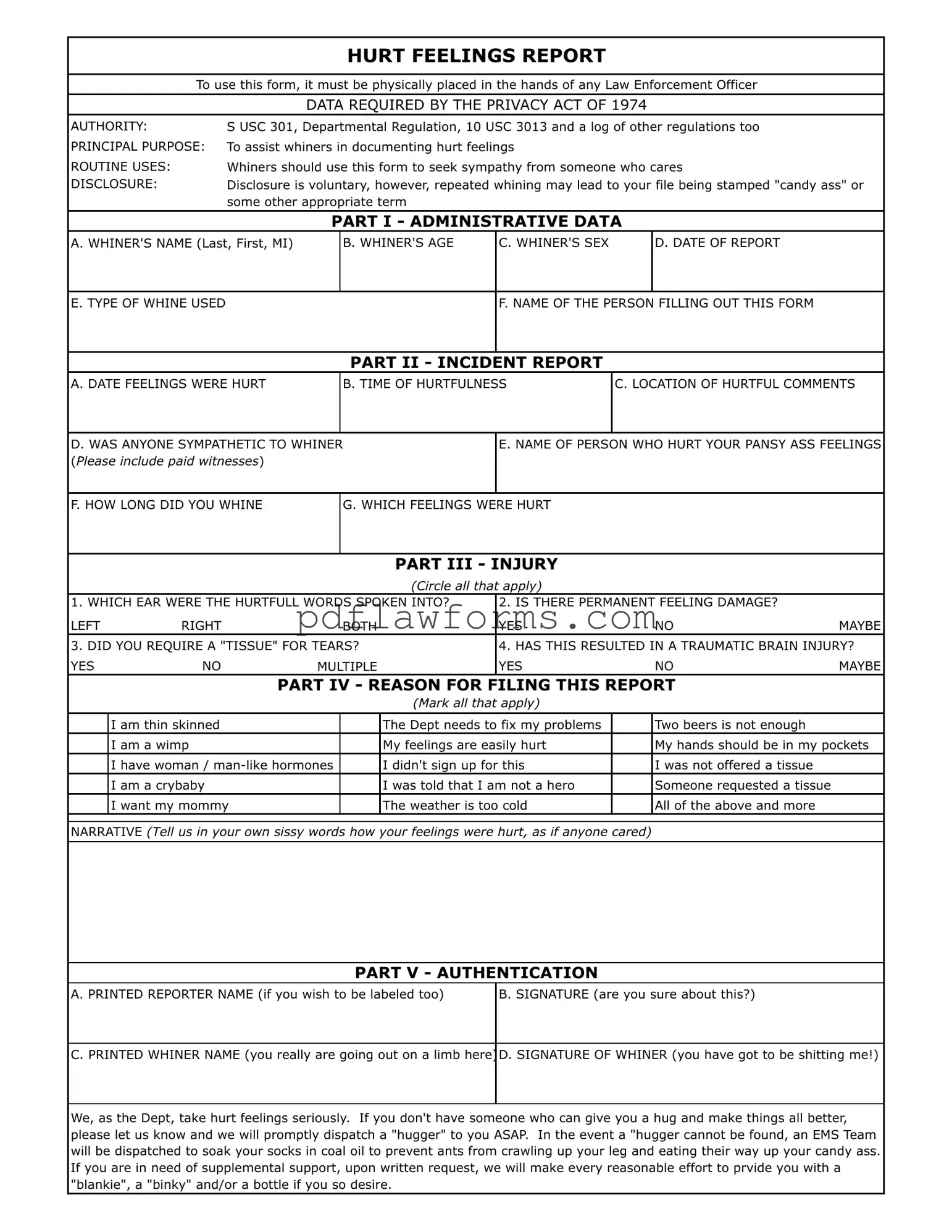When completing the Hurt Feelings Report form, individuals often make several common mistakes that can hinder the process. One frequent error is failing to provide complete personal information in Part I. Omitting details such as the whiner's name, age, or sex can delay the review of the report and may lead to unnecessary complications.
Another mistake involves inaccuracies in the incident report section. When filling out Part II, it is essential to be precise about the date, time, and location of the hurtful comments. Inaccurate information can create confusion and may undermine the validity of the report. Furthermore, not including all relevant witnesses, particularly those who may have been sympathetic, can weaken the case.
In Part III, individuals sometimes neglect to circle all applicable injuries. This section asks about the specifics of how the hurtful words impacted the individual. Failing to indicate whether there was permanent feeling damage or if a tissue was required can lead to misunderstandings about the severity of the situation.
Another common oversight occurs in Part IV, where individuals may not fully mark all the reasons for filing the report. This section allows for a range of responses, and not selecting all that apply can result in a lack of context for the reported feelings. It is crucial to be honest and thorough to ensure the report accurately reflects the situation.
Additionally, the narrative section often suffers from vague or incomplete descriptions. Providing a detailed account of how feelings were hurt is vital for understanding the context. Many individuals write too briefly or use unclear language, which can lead to misinterpretation of the events.
Signature errors are also prevalent. In Part V, individuals may forget to sign the report or may not provide their printed name. This can raise questions about the authenticity of the report and may result in delays in processing.
Finally, some individuals overlook the importance of reviewing the entire form before submission. Failing to double-check for spelling errors, missing information, or unclear responses can compromise the effectiveness of the report. Taking the time to ensure everything is accurate and complete can significantly improve the chances of a positive outcome.
